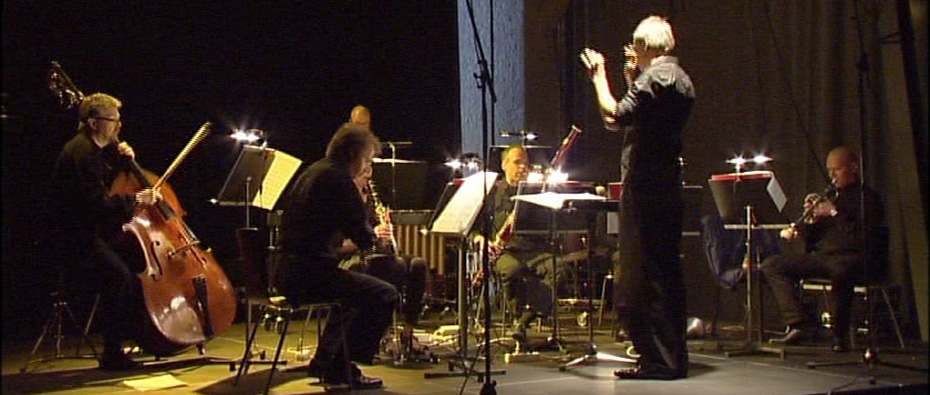1st Concert - Bassic Instinct
1st Concert
Stravinsky, Soldier & Satan
May 8. 2010
Korjaamo Vaunusali, Helsinki
Program:
Esa-Pekka Salonen (b.1958): Catch and Release (cl, bsn, tr, trb, perc, vln, db)
Tema
Aria
Games
-
Igor Stravinski (1882 - 1971): L'histoire du soldat (cl, bsn, tr, trb, perc, vln, db)
Lue, Jouée et Dansée en Deux Parties
Original French text by Charles-Ferdinand Ramuz

Sound theme
For my study of the acoustic interaction between chamber ensembles and concert venues, I started with an ultimate challenge. The sound formation and the ring of chamber ensembles are governed by overtone resonance, consonant or not, and everything in between. The ring of the ensembles varies a lot, depending on the combination of instruments and the number of consonant harmonies - in other words – on the score itself.
Stravinsky's The Soldier's Tale presents a mixed ensemble of seven instruments, scored, as is typical for the composer, in a very unique way. Mobility, the instrumentalists available at the time and the composer's expressive ideas determined the genesis of the ensemble rather than qualities of consonance. The septet from The Soldier's Tale does not enable much overtone resonance or consonant ring and has also been mentioned as an example of an "un-ensemble". Rather than just a bass instrument, the double bass acts as an independent perpetual rhythm machine keeping on apparently in spite of the melodies.
The narrator's role, especially when amplified as is often done today and as in this performance, gains from rather dry acoustics, which however, makes life harder for the instrumental ensemble. Therefore, everything concerning the complete sound and music's ring ends up being the result of a compromise and partly sacrificed for purposes of the stage drama. On the other hand, that may have been the composer's initial idea. In the original score Stravinsky drew a design of an orchestra shell for the ensemble beside the actors and dancers on the stage. The structure was obviously designed to project the ensemble sound in the acoustic conditions of a theater.
As a musician who knows The Soldier's Tale inside and out, Esa-Pekka Salonen composed his Catch and Release for the very same instrumental ensemble, the idea being that the two works could be performed together. At times, Salonen's septet sounds rather Stravinskyan but it is a fully original work, not just a tribute to the great Russian master. The sound challenge of the ensemble remains the same.
Hannu Lintu, conductor
Pekka Huotari, actor/narrator
Eeva Mäenluoma, clarinet
Jussi Särkkä, bassoon
Miikka Saarinen, cornet/trumpet
Vesa Lehtinen, trombone
Jaakko Kuusisto, violin
Heikki-Pekka Parviainen, percussion
P.L. double bass
Henrik Möller, acoustic consultation
